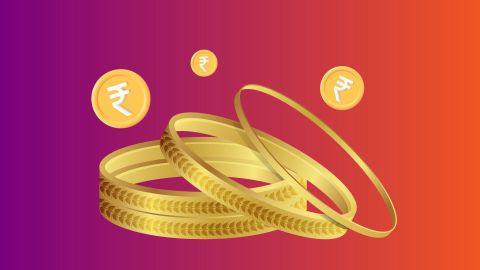Price differences between diamonds and gold are influenced by various factors, including market conditions and rarity.
Gold prices are determined based on international rates and currency exchange values, offering a more standardised pricing structure.
Diamond prices depend on factors like cut, clarity, colour, and carat weight, making each diamond unique in its pricing.
Gold rates are more transparent, making it easier for investors to track market trends.
The price per gram of gold can be easily compared across different regions, unlike diamonds.
Diamonds have a broader price range, with premium stones commanding higher prices due to their rarity.
Resale value comparison of diamonds and gold
When considering resale value, gold and diamonds offer different benefits for investors looking to maximise returns.
Gold generally retains its resale value better, with established buyers like Bajaj Finance and jewellers.
Diamonds may lose a portion of their value when sold, depending on market demand and stone quality.
Gold’s standardised pricing ensures a more straightforward resale process compared to diamonds.
Buyers often face challenges in finding the right market for selling diamonds.
Reselling gold offers better liquidity, making it a preferred option for quick cash needs.
Investment potential of diamonds compared to gold
Investors need to weigh the potential growth of diamonds and gold to decide which better suits their long-term objectives.
Gold has proven to be a reliable asset, especially during periods of economic instability and inflation.
Diamonds can appreciate over time, but their value largely depends on the stone's quality and market trends.
Gold is often considered a better hedge against inflation, protecting purchasing power.
The diamond market is more volatile, with prices influenced by trends in luxury goods and consumer demand.
Diversifying investments with both gold and diamonds can balance risk and return for investors.
How to assess the value of diamonds and gold?
Valuing gold and diamonds requires understanding their unique qualities, including weight, purity, and market demand.
Gold’s value is assessed by its karat, weight, and the current market price.
For diamonds, the 4Cs—carat, cut, clarity, and colour—are used to determine the stone’s value.
Certified gold, such as BIS-hallmarked, offers better credibility and resale value.
Diamonds with certification from reputable institutions like GIA hold higher market value.
Regularly monitoring market trends can help investors determine the best time to buy or sell.
Market trends in diamond prices and gold prices
Market trends can significantly impact the investment potential of diamonds and gold. Understanding these trends is vital for investors.
Gold prices often rise during economic uncertainty as it is seen as a safe-haven asset.
Diamond prices are more affected by demand within the luxury market and supply chain constraints.
Global economic events and currency fluctuations directly impact gold prices.
Diamonds can see price hikes during festive seasons and wedding seasons when demand increases.
Monitoring market trends helps investors capitalise on price dips and surges in both assets.
Considering diamonds or gold for investment purposes
Choosing between diamonds and gold for investment involves understanding their unique attributes and how they align with your financial goals.
Gold offers better liquidity and is easier to convert into cash, making it ideal for short-term needs.
Diamonds can be valuable assets for long-term appreciation but require patience for the right selling opportunity.
Gold’s value is less subjective, while diamonds are valued more for their luxury appeal.
Investors looking for safety may prefer gold, while those seeking exclusivity might lean towards diamonds.
A balanced investment portfolio could include both assets to mitigate risks.
Understanding loan options for gold and diamonds
Securing loans against gold and diamonds is possible through institutions like Bajaj Finance. Each has its own considerations.
Bajaj Finance offers gold loans based on the weight and purity of gold, with quick processing.
Loans against diamonds are less common, as their value varies greatly.
Gold loans offer higher loan-to-value ratios due to gold’s market stability.
Loan amounts for diamonds depend on the certification and appraisal of the stone.
Collateral loans like these provide a way to unlock the value of assets without selling them.
Advantages of gold loans compared to selling diamonds
Gold loans are often a better option than selling diamonds when you need immediate funds, offering several benefits.
Gold loans from Bajaj Finance allow you to retain ownership of your gold while accessing funds.
Selling diamonds can lead to a significant loss in value, especially in the second-hand market.
The loan process for gold is more streamlined and transparent compared to diamonds.
Repaying a gold loan enables you to recover your gold, retaining its long-term value.
Interest rates on gold loans are often lower than the cost of selling and repurchasing diamonds.
Choosing between diamonds and gold for loan collateral
Both diamonds and gold can be used as collateral, but each has specific considerations.
Gold is often the preferred collateral due to its standardised value and quick liquidity.
Bajaj Finance offers better loan-to-value ratios for gold than for diamonds.
Using diamonds as collateral requires thorough appraisal, which can delay the loan process.
Gold’s value is more predictable, making it easier to estimate the potential loan amount.






